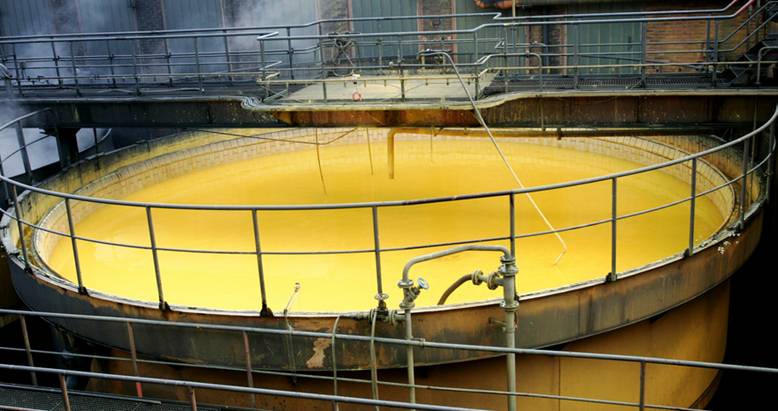Existing manufacturing processes of iron oxide pigments
The Krefeld-Uerdingen site of Lanxess Deutschland GmbH is home to the world's largest production facility for iron oxide pigments (Bayferrox® and Colortherm®). Here, Lanxess also operates the world's single production facility for iron oxide pigments using the sustainable Laux process. The Laux process makes a decisive contribution to the unique quality characteristics of Colortherm® and Bayferrox® pigments from Lanxess Deutschland GmbH. This resource-saving process primarily produces black iron oxide, which can then be further converted into red iron oxide pigment. The precipitation and Penniman processes are primarily used to produce yellow iron oxide pigments. The three processes for iron oxide production are described in detail below.
The Laux process
The Laux process was originally used exclusively to produce aniline (C6H5NH2) from nitrobenzene (C6H5NO2). It was not until 1925 that the chemist Dr. Laux discovered that, under certain chemical conditions, the iron oxide produced in this reaction could be used as an extremely color-strength iron oxide pigment. This process is primarily used to produce black iron oxide (e.g. Bayferrox® Black 330) using cast iron chips, although it is also possible to react it to produce iron oxide yellow (e.g. Bayferrox® Yellow 420). In this case, so-called granules (iron scrap) are used instead of cast iron chips. Red iron oxide pigment (e.g. Bayferrox® Red 110) can be produced from black iron oxide in a further thermal yet energy-efficient reaction step.
The Laux process is the world's most sustainable production process for iron oxide pigments, since large quantities of ferrous scrap are used as raw materials. Thus, our product takes into account the current requirements for resource-saving production and has been doing so for 100 years.
The precipitation process
In the precipitation process, iron sulfate is oxidized in an alkaline environment with atmospheric oxygen to yellow iron oxide pigment (Bayferrox® Yellow 920). Here, too, as in the Penniman process, the presence of yellow nucleus pigments is required to produce high-quality yellow pigments.
The Peniman process
In the Penniman process, iron scrap is oxidized to yellow iron oxide in a sulfuric acid medium under the action of atmospheric oxygen. Ferrous sulfate serves as a catalyst in this process. In order to produce high-quality yellow pigments, the presence of yellow nuclei is also necessary.

